Invented by Jonathon Reilly, Jason Heffernan, Andrej Sarkic, Zivthan Dubrovsky, Luis Vega-Zayas, Nicholas Salzman, Adrian Eiben, Sonos Inc
A playback device demonstration is a way for manufacturers to showcase the features and capabilities of their products. This can be done in a variety of ways, including in-store demonstrations, online videos, and product reviews. The goal of these demonstrations is to give potential customers a hands-on experience with the product, allowing them to see how it works and what it can do.
In-store demonstrations are perhaps the most common type of playback device demonstration. These are typically done in electronics stores, where customers can see and touch the product before making a purchase. In-store demonstrations are often done by knowledgeable salespeople who can answer questions and provide additional information about the product.
Online videos are another popular way to demonstrate playback devices. Manufacturers often create videos that showcase the product’s features and capabilities. These videos can be found on the manufacturer’s website, as well as on video-sharing platforms like YouTube. Online videos are a convenient way for customers to learn about a product from the comfort of their own home.
Product reviews are also a valuable tool for demonstrating playback devices. Reviews can be found on a variety of websites, including Amazon and Best Buy. These reviews are written by customers who have purchased and used the product, and they provide valuable insights into the product’s performance and reliability.
The market for playback device demonstrations is growing, as manufacturers recognize the importance of showcasing their products to potential customers. By offering demonstrations, manufacturers can differentiate their products from those of their competitors and give customers a better understanding of what they are buying. Whether it’s an in-store demonstration, an online video, or a product review, playback device demonstrations are an important part of the modern electronics market.
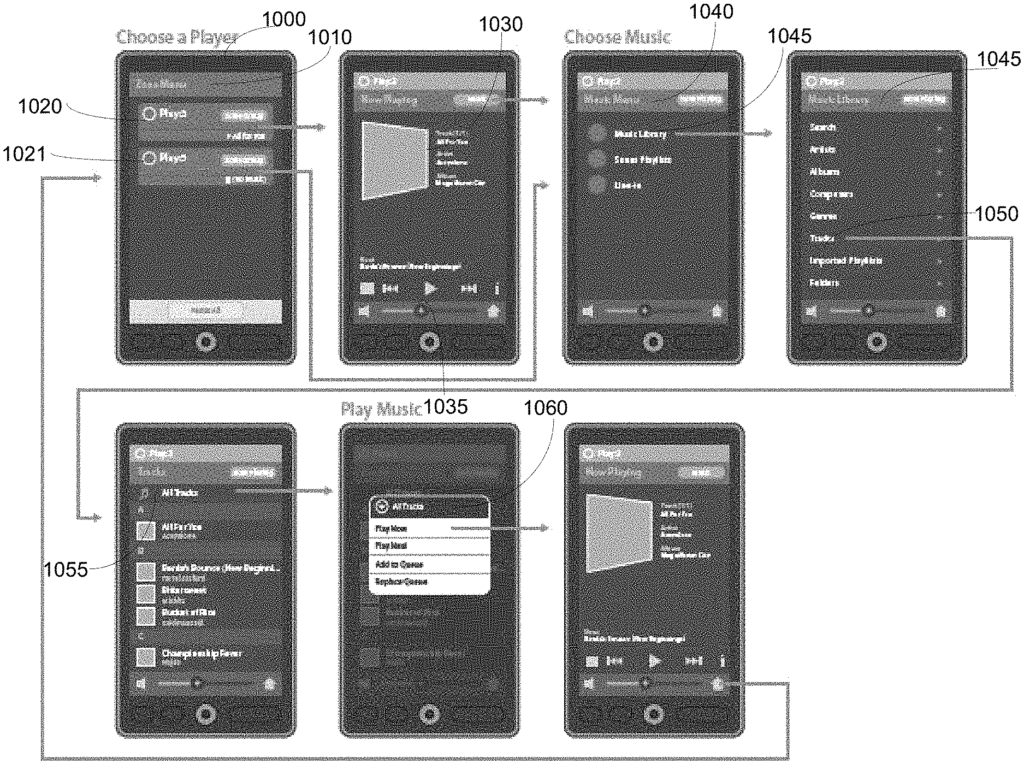
The Sonos Inc invention works as follows
A playback unit may be communicatively linked to a network at a demonstration site. The playback device can receive a message from the network device indicating the media content to be played by the device after connecting. The playback device can play media content in response to the message. Playing media content may include modifying the default configuration of the demonstration mode. The playback device can be disconnected from a network device after receiving the message. The playback device can be reset to its default configuration after disconnecting from the device.
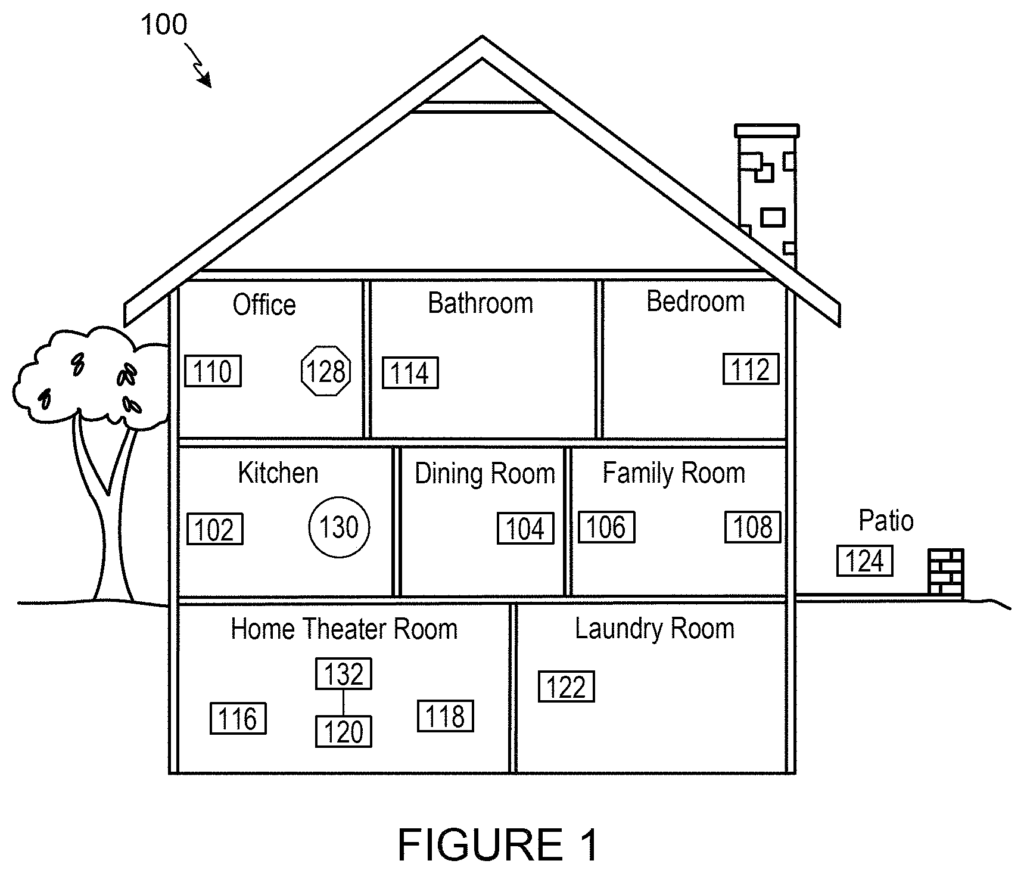
Background for Playback device demonstration
The technological advancements have made music and other media more accessible, including television, movies, interactive content, and movie content. Users can, for example, access audio or video content, including both audio and videos, via the Internet. This includes through online stores, Internet radio stations, online music services, online movie services, etc., as well as the more traditional ways of obtaining audio and visual content. The demand for audio and video content is increasing. The technology to play and access such content is also improving due to the high demand.
Retail environments offer a variety of electronic products to their customers. Retail environments such as electronic stores sell digital devices such as receivers and speakers. Retail environments often display products that demonstrate music, movies and other products. This is because customers want to see demonstrations before purchasing.
Product demos that use applications are often outdated or not in line with media trends.” Customers may, for example, view demos of old songs or videos. Internet-enabled devices may also require that you enter your account information in order to access the services offered via the Internet.
I. Overview
A commercial product release and sale in a retail establishment includes a brand strategy that includes a retail point-of-sale (POS) display. The POS display can function both in a network connected environment and a nonconnected one, where consumers are able to experience a product such as a multi-media playback device (e.g. a zone player) by way of the POS display. A retail environment can be any place with foot traffic. (e.g. an electronics store or department store. An airport, coffee shop and so on). A retail environment is not always known as a place for retail.
Certain examples show one or more playback device (e.g. zone players, speakers and so forth) which can be configured in a configuration that includes a display, for example, at a point-of-sale location such as a kiosk, cart, retail establishment and so forth. Displays (e.g. a video display in a point-of-sale location) and/or loudspeakers can receive content and produce one or more outputs based on the content received.
Some examples provide a control, such as a Android?-based control (e.g. accessible via a phone), to facilitate the interaction with an interface that allows the user to explore and interact with the advertised product on the point of sales display.
Certain Examples provide an experience for potential customers, whether or not the products displayed in the retail environment is connected to an external network such as the Internet. Certain examples allow potential customers to interact and view information about demo products, regardless of whether they are connected to an outside network. Some examples limit what customers can do (e.g. lock a device), so that they cannot disrupt or make inoperable the demonstration device.
The examples of systems, methods, devices, and articles disclosed herein allow for the configuration and management one or more playback units in demonstration configuration at a point-of-sale location.
Certain embodiments provide a demonstration system of a playback unit at a point-of-sale. The example system comprises a playback unit configured to be used for demonstration playback at the point-of-sale by one or multiple users. The example playback system is configured to play content in response to a set of allowed user commands. The example system contains a user interface to allow the user to interact with the playback devices and provide the user with information about the device. The user control in the example system includes a selection option that allows users to get additional information about playback device functionality. The example user control has been restricted to demonstrating the repeatable playability at the point-of-sale of the playback devices. The example system monitors the playback device to ensure that users can play it again.
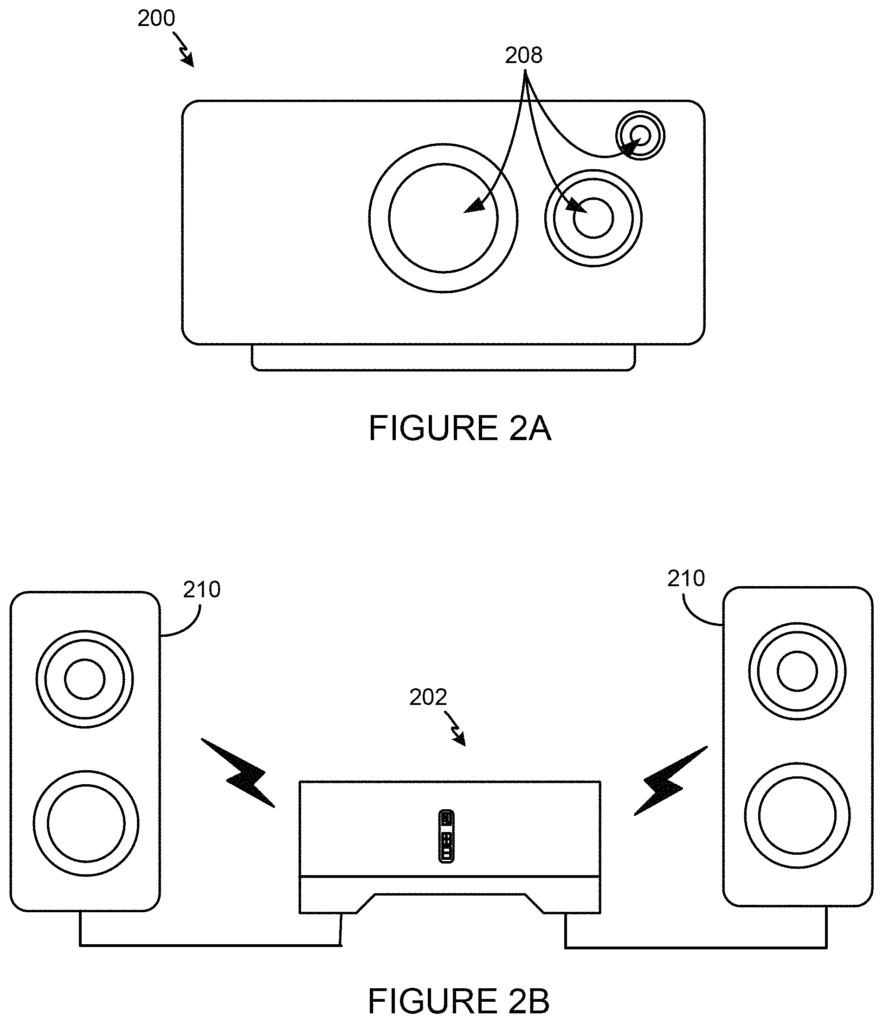
Certain embodiments provide a demonstration method of device playback in a point-of-sale. A playback device is used to provide information about playback device functions at a point-of-sale. The example method involves facilitating interaction between users and the playback devices to allow one or more users to play back content using the playback devices at the point-of-sale. The example method limits user control of the playback devices to ensure repeatable playability at the point-of-sale. The example method involves monitoring the playback devices for repeatable playability at the point-of-sale by users.
When executed by a processor, certain embodiments provide a tangible, computer-readable storage medium that includes a set instructions for execution. The set of instructions implements a demonstration control for one or multiple playback devices for one or several users at a retail point. The example implemented controller comprises a display for providing information to a customer at a point-of-sale regarding the functionality of a playback device. The example implemented control includes a user interface to allow interaction between the user and the playback devices to play back the content. The example controller restricts user access to the playback devices to ensure repeatable playability at the point-of-sale and monitors playback device performance by users.
Certain embodiments allow a user playback multimedia content on a demo configuration of playback devices at a point-of-sale location. A user could, for example, play a track from their IPHONE or IPOD? For example, a user can play a song from his/her IPOD? Docked the device (e.g. wired or wirelessly) to a Point of Sale Display.
While the following describes example systems, method, apparatus and articles of manufacturing that include, among other components, software and/or firmware executed on hardware, please note that these systems, methods and apparatus are only illustrative, and not intended to be limiting. It is possible that all or some of these components, such as firmware, hardware and/or software, could be implemented exclusively in hardware or software. Or, they could be implemented exclusively in firmware. The following examples of systems, method, apparatus and/or article of manufacture are only examples.
When any of the claims appended are read as covering a software-only implementation, then at least one element in at least an example is defined to include a physical medium, such as a DVD, CD or Blu-ray disc, that stores the software.
Reference to ’embodiment’ herein means that a particular feature, structure or characteristic described in connection with the embodiment can be included in at least one example embodiment of the invention. “Reference herein to?embodiment” means that at least one embodiment of the invention can include a certain feature, structure or characteristic described with respect to the embodiment. This phrase may appear in different places within the specification. It does not mean that all of the appearances are referring to the exact same embodiment. Separate or alternative embodiments are also not mutually exclusive. The embodiments described in this document, as understood by a person skilled in the art and explicitly or implicitly, can be combined together with other embodiments.
II. Example Environment
Now, referring to the drawings in which the same numerals may refer to similar parts throughout the figures. FIG. The FIG. 1 illustrates an example configuration 100 of a system in which the disclosed method or apparatus can be implemented or practiced. The system configuration 100 is an illustration of a house with multiple zones. Each zone represents, for instance, a different space or room such as a bathroom, bedroom or office. A single zone may cover multiple rooms or spaces, even though they are not shown. In each zone, one or more zone players 102-124 can be seen. Zone players 102-124 are also known as playback devices, multimedia units, speakers, etc. They provide audio, video and/or audiovisual outputting. The system configuration 100 is controlled by a controller 130, which can be found in the kitchen as an example. The system configuration 100 is an example of a whole-house audio system. However, it should be understood that the technologies described herein are not limited to a particular application or system such as pictured in FIG. 1.
FIGS. The zone players 200 to 204 are illustrated in FIGS. The zone players 200 to 204 in FIGS. The zone players 1002-124 in FIGS. 1. Despite the fact that certain embodiments have multiple zone players, audio outputs can be produced using only one zone player. FIG. FIG. 2A shows a zone player with sound producing equipment (208), which can generate sound or audio outputs in response to signals received, either wirelessly or via a wired connection. The zone player 200 in FIG. 2A includes sound producing equipment (208). The 2A also includes an amplifier built in (not shown here) and speakers, such as a tweeter or mid-range driver and/or subwoofer. In some embodiments, zone player 200 (FIG. The zone player 200 of FIG. In certain embodiments, zone player 200 from FIG. 2A can be configured to work as part of a combination zone player that plays stereophonic, monaural, or surround audio. In some embodiments (described in more detail below), the zone player 200 shown in FIG. 2A may also be able to transmit a second message, such as to other zone players in the same zone or a different zone, speakers, receivers, etc. The second signal transmission can be a part of a system, such as a network of zone players, receivers and speakers.
The example zone player 202 in FIG. The 2B version includes an amplifier built in (not shown here) that powers a pair of speakers 210. The speakers 210 in FIG. The speakers 210 of FIG. The zone player of FIG. 2B can send a signal that corresponds to audio content via wireless and/or wired channels to the detached speakers. In FIG. Instead of receiving and generating audio content as in FIG. 2B receives audio content (e.g. after processing received signal) and transmits it to the detached speakers. The example zone player of FIG. In some embodiments, the zone player can transmit a secondary signal, for example to other zone players in the same zone or different zones, speaker(s), receivers, and so on.
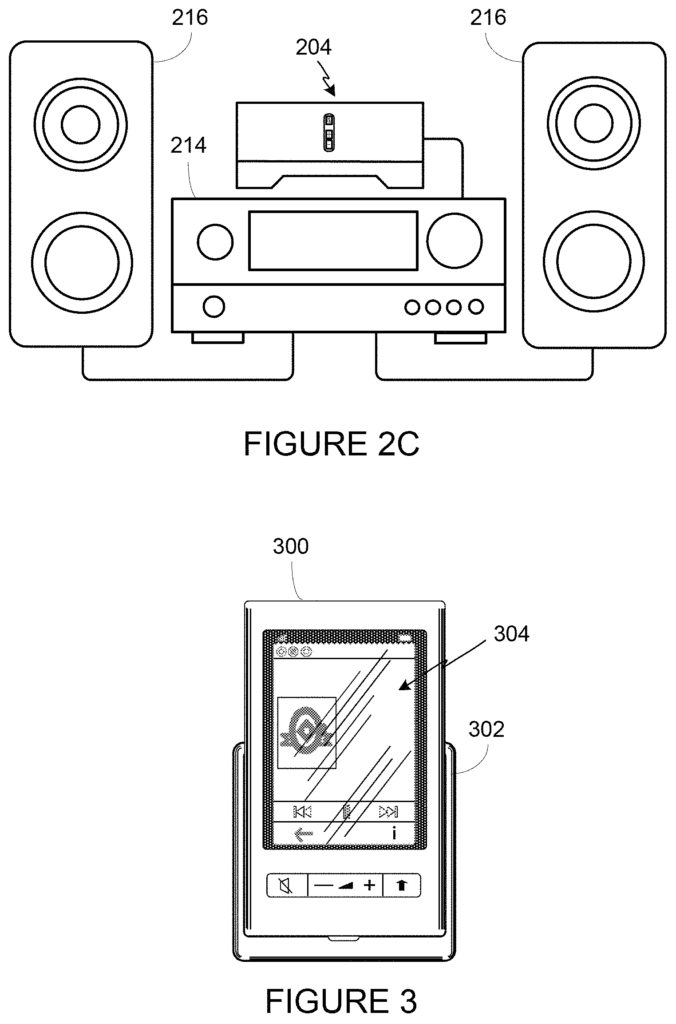
Click here to view the patent on Google Patents.
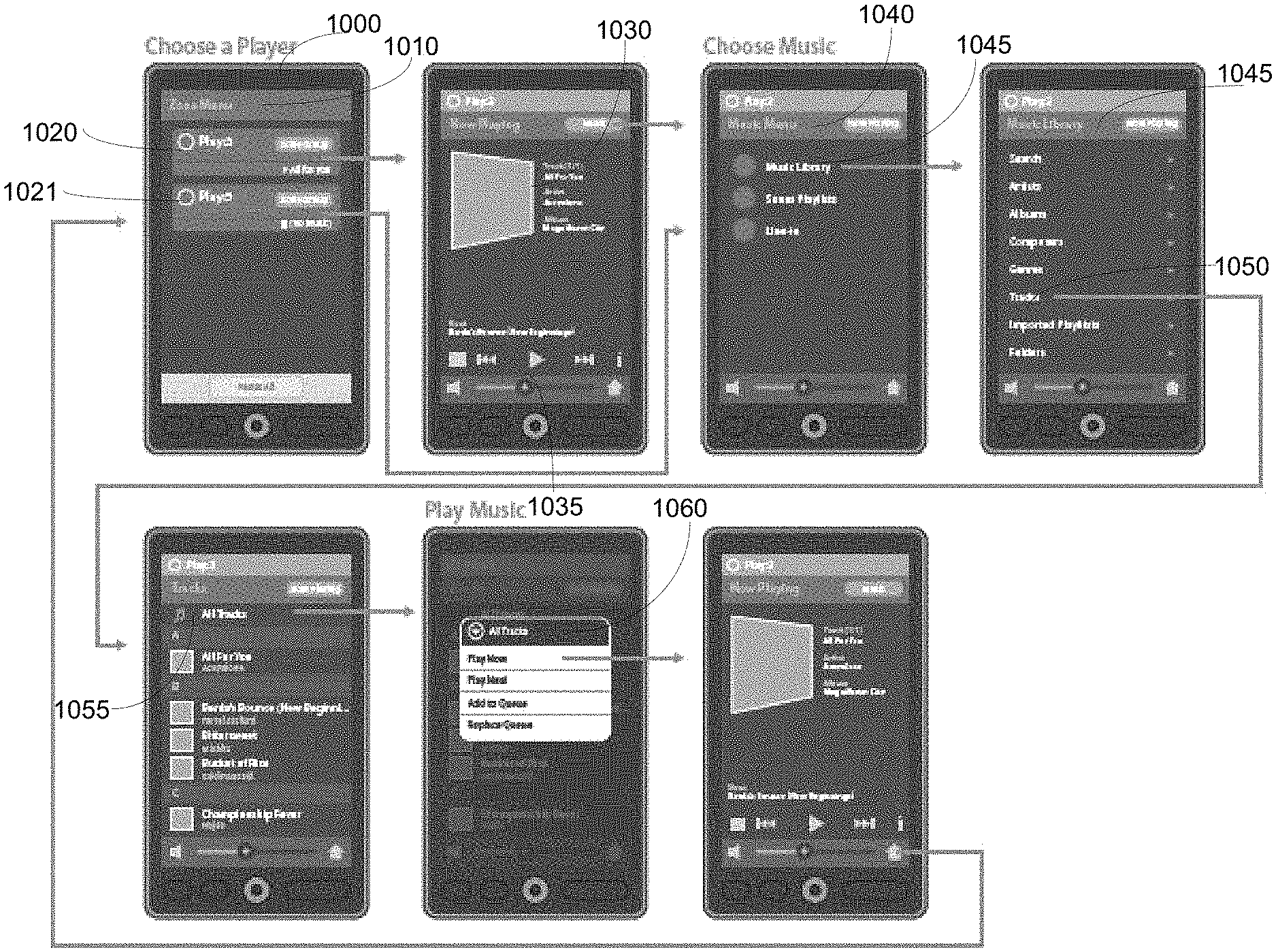
Leave a Reply